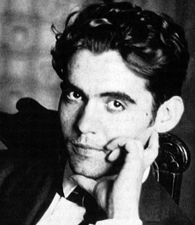Before the Spanish Civil War, scholars, literary figures and artists from all of Europe found a home in Spain, a nation of contrasts, diverse cultures and languages. Federico García Lorca was an essential figure in Spanish literature and history, and played a key role in this cultural network.
Federico García Lorca’s Early Days
Federico García Lorca was born in the town of Fuente Vaqueros, Spain, on June 5, 1898. His father was a prosperous landowner, and his mother was a well-educated teacher and talented pianist.
His imagination was always well developed; according to the Moonstruck Drama Bookstore, as a child, he carried on conversations with inanimate objects, which he infused with individual personalities. He also studied music at an early age, and in his teens, he wrote his first poems and recited them at local cafés.
Despite the encouragement of his music teacher, Federico was strongly inclined toward literature. His father’s pressure, however, led him to study law and philosophy at the University of Granada in 1914. But Federico’s passion for art, literature and theatre was strong. In 1919, he published his first book, “Impresiones y Viajes” (“Impressions and Trips”), which was inspired by a trip to Castile.
Sources in this Story
- Academy of American Poets: Poets.org: Federico García Lorca
- Moonstruck Drama Bookstore: Federico García Lorca
- Encyclopedia Britannica: Federico García Lorca
- The BBC: Poet’s death still troubles Spain
- The Guardian: Spanish archeologists fail to find Federico García Lorca’s grave
García Lorca’s Notable Accomplishments
García Lorca moved to Madrid in 1919 to study literature and philosophy. It was here that he met and became friends with poet Juan Ramón Jiménez, filmmaker Luis Buñuel and surrealist painter Salvador Dalí. The group of friends became known as the “Generation of ’27,” a cultural group of artists that represented the avant-garde.
Promptly abandoning his formal studies, García Lorca devoted himself entirely to his art, organizing theatre performances, publicly reading his poems and incorporating folk songs into his work. During his Madrid years, he worked on several plays and poetry books.
In 1920, he premiered his play, “El Maleficio de la mariposa” (“The Butterfly’s Evil Spell”); at the time, it was considered a scandal rather than a success. In 1921, he published his first poetry book, “Libro de poemas” (“Book of Poems”), a compilation of his poetry that incorporated themes from Spanish folklore.
According to Academy of American Poets, “García Lorca’s work was infused with popular themes such as Flamenco and Gypsy culture.” In 1922, he organized the first “Cante Jondo” festival featuring Spain’s most famous “deep song” singers and guitarists.
Six years later, García Lorca was catapulted into fame by the publication of his book of verse, “Romancero gitano” (“The Gypsy Ballads”). The book was reprinted seven times during his lifetime alone. In 1929 he moved to New York City, and was especially fond of Harlem, but returned to Spain in 1930.
The Man and His Work
The Rest of the Story
In 1931 he founded “La Barraca” (“The Shack”), a theatre company composed mostly of students who toured the countryside offering free performances of Spanish classics. The company also performed three “rural tragedies” by García Lorca that established his theatrical reputation.
In August 1936, in the early days of the Spanish Civil War, García Lorca was arrested by General Francisco Franco’s Nationalist forces, who objected to his leftist beliefs and homosexuality. He was executed without trial outside of Granada on August 18 or 19. His burial place remains a mystery; a November 2009 exhumation outside Granada failed to turn up his remains.
After his death, García Lorca’s writings were banned and burned in the Plaza del Carmen in Granada. The poet was regarded as a martyr and a symbol of political oppression. The performance of his plays was not revived until the 1940s, and some bans remained in place until the early 1970s.
Today, García Lorca is considered one of the best Spanish poets of the twentieth century and remains a national hero.
This article was originally written by Anita Gutierrez-Folch; it was updated May 16, 2017.











